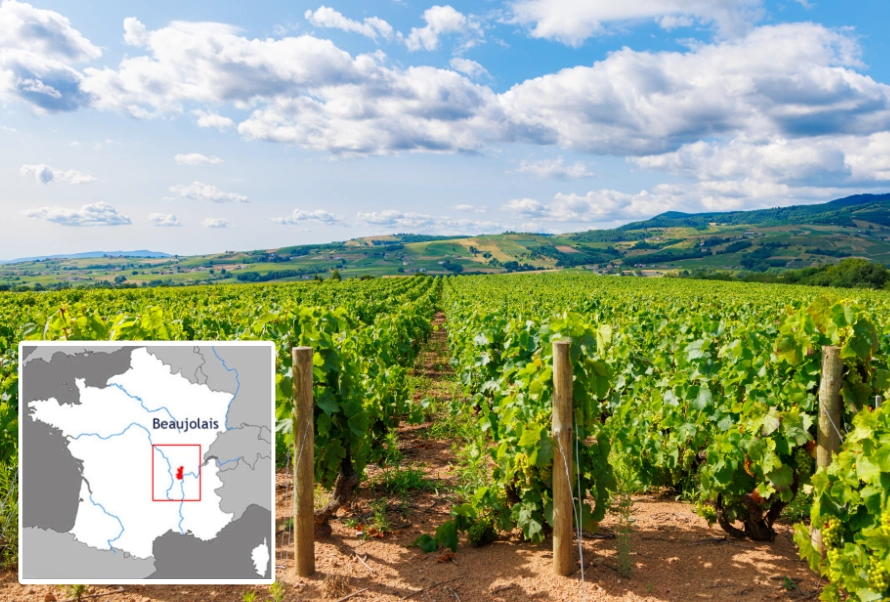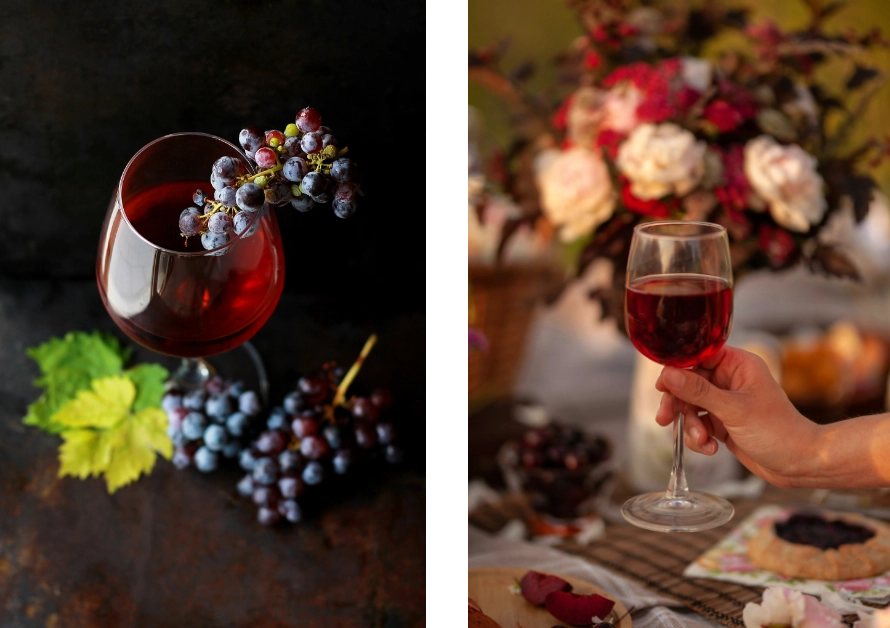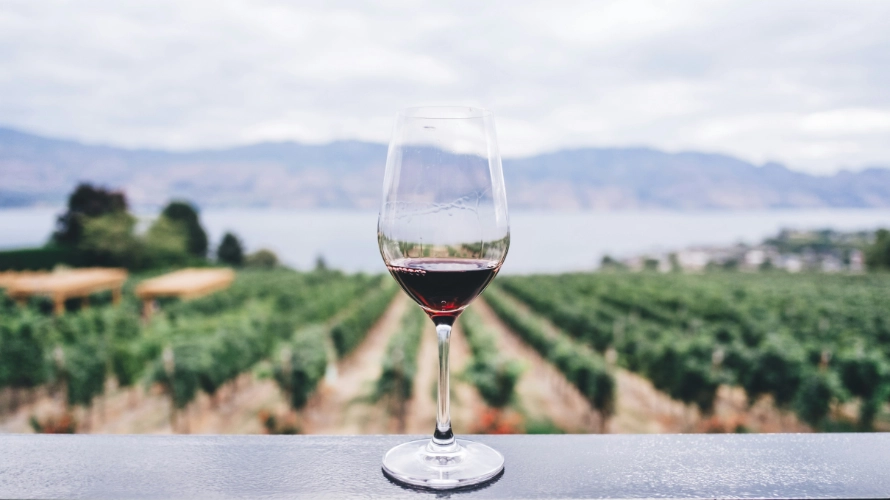Beaujolais Nouveau: An autumn affair that sings with joy
Every third Thursday in November when France, and increasingly, the rest of the world, pauses with bated breath, hearts racing not from the chill of autumn, but because of a crimson celebration that feels as fresh as the very wine in question. Beaujolais Nouveau Day is a festival of anticipation, of friendly rivalry, of grape-stained memories and the kind of conviviality that reminds us how marvelously simple pleasures can tie strangers together, from Lyon to London.

A toast to tradition: where the magic began
The story of Beaujolais Nouveau traces its roots to a time when wine was a matter of both hard work and pure, unbridled joy. Traditionally, after weeks of harvesting Gamay grapes in the rolling hills north of Lyon, vineyard workers couldn’t resist a tipple of the first young wine, barely weeks old, to mark the end of their toil. This was wine in its rawest, most jubilant form, zesty, lively, and bursting with berries, a harbinger of the year’s quality and a thank you from the land.
But what began as a local reward soon transformed into a national, then international, phenomenon. The clever hands and relentless drive of winemaker and marketer Georges Duboeuf helped elevate Beaujolais Nouveau beyond France, with a rallying call that would become a catchphrase: “Le Beaujolais Nouveau est arrivé!” In other words, the wine’s here, quick, get your glass before it’s gone.
By the 1970s, it was official: this wasn’t just a wine release, but a party. By 1985, to prevent the chaos of staggered regional releases, law decreed that all Beaujolais Nouveau would hit the shelves on the third Thursday of November. Since then, it’s become a global rite: at exactly 12:01 a.m., corks fly and glasses are filled in more than 110 countries.
Why autumn, why Thursday?
The grape harvest, or vendange, wraps up in early autumn. The Gamay grapes, the only ones allowed for Beaujolais Nouveau, are whisked off for a speedy bottle-to-table transformation, bottled after just six or seven weeks of fermentation. This quick turnaround means the wine is vivid, light, and playful. It’s the “first taste” of the year’s fruit, and the closest thing to bottling French autumn itself.
There’s something pleasingly egalitarian about its rigidly chosen Thursday, too: no matter how high or humble you are, nobody can open a bottle before 12:01 that morning. No fancy châteaux, no innocent restaurant, just people, everywhere, queuing up outside wine shops, cheering with friends in pubs, or even, as the legend goes, bathing in Beaujolais Nouveau at Tokyo’s spas (Japanese exuberance at its best).

Where in the world are the Beaujolais vineyards?
You won’t stumble across the Beaujolais vineyards by chance, they’re tucked in a pocket of France that feels both quietly proud and a bit off the well-trodden path. An undulating patchwork of vines, golden in the autumn light, stretching between the picturesque towns of Mâcon and Lyon. This is the heartland of Beaujolais, and honestly, it’s a landscape that has “wine adventure” written all over it.
The Beaujolais vineyard, le vignoble du Beaujolais, sits in the north of the Rhône department and spills a toe or two into a handful of communes in Saône-et-Loire. That’s right: Beaujolais bridges two departments, claiming bits of each in its sweep. Technically, or rather administratively, it’s linked to the illustrious Burgundian vineyard family. Yet ask anyone who’s spent a morning on these slopes, and they’ll tell you: Beaujolais has a spirit all its own, more cheeky younger sibling than copycat cousin.
The geography of the region gives the wine much of its charm. The vineyards cloak the foothills of the Beaujolais mountains, les monts du Beaujolais, where rocky soils lend a certain finesse to the famed Gamay grape. It’s here, on these gentle slopes, that centuries of growers have teased astonishing freshness from their vines.
If you’re plotting this on a map, Beaujolais stretches about 55 kilometres from north to south, sandwiched between the River Saône to the east and those rugged hills to the west. The northern edge sidles up just below Mâcon, a charming town that itself is part of Burgundy wine country. Southward, the vineyards run almost all the way to the outskirts of Lyon, France’s kingpin foodie city.
What does Beaujolais Nouveau taste like?
Let’s not overthink: Beaujolais Nouveau isn’t about complexity, but joy. It’s like meeting an exuberant puppy who hasn’t quite learned to behave, light in body, zippy with flavours of strawberry, raspberry, and candied violets, sometimes with a playful hint of banana thanks to its peculiar fermentation method. This is a proper red, but nothing like the bold, brooding stuff you might usually encounter. Served slightly chilled, just as the French autumn breeze would have it, it begs for food that’s rustic and sociable: crusty baguette, ripe brie, or whatever’s on hand and ready to share.
Now, what sets Beaujolais Nouveau a world apart from the big names lurking in wine racks? For a start, it’s gloriously light in colour, think ruby, almost jewel-bright, and positively refreshing on the palate. The tannins, those mouth-gripping elements you’ll find in heavy reds, are barely there, leaving the texture silky and supple. That gentleness is down to the magic of carbonic maceration, a winemaking approach that keeps tannins mild and lets the fruitiness lead the way. Alcohol-wise, you’re generally in for a moderate 12%–13%, so this is a red you can enjoy well into the evening without feeling like you’ve lost the next morning.

Yet, it’s worth noting that Beaujolais Nouveau doesn’t always win over every wine lover. There are purists who turn up their noses at its youthful irreverence, thinking it a little too playful and a touch too easy. But honestly, who can argue with the numbers? This brazenly youthful wine accounts for a staggering 30% of all Beaujolais sales, about 15.5 million bottles hit the shelves every year. That’s a lot of glasses raised in November, whether you’re joining for tradition, curiosity, or simply the excuse to celebrate.
Unlike serious reds that demand patience and cellaring, Beaujolais Nouveau insists on being enjoyed in its infancy, usually within the first year. With all its fruit-forward fun and unpretentious air, why wait? When the bottle’s winking at you, you can’t help but surrender. It’s honest, welcoming, and above all, fun!
In 2025, the magic falls on Thursday, 20 November. If you’re reading this today somewhere in the UK, mark that date and prepare to raise a glass alongside wine lovers across the Channel and far beyond

Beaujolais Nouveau’s price tag
Of course, there’s the question everyone wants to ask: how much does this festive tipple actually cost? Here, the story gets just as charmingly unpredictable as the wine itself.
Thanks to the time difference, it’s often in Japan that Beaujolais Nouveau gets its first toast, hours before the bottles even start popping in France. The Japanese embrace is legendary, launch parties, themed events, even spa baths with Beaujolais poured in, and for many, the price tag climbs into the realm of the truly extravagant.
Back home in France, though, it’s a different story. Beaujolais Nouveau is purpose-built for pleasure, not pondering. At your local supermarket, you’ll typically find a bottle for around 10€, putting this seasonal celebration firmly in “treat yourself” territory without causing any wincing at the till. Of course, if you decide to savour it in a restaurant, soaking up the atmosphere with friends, the bill can creep above 30€, especially in a city bistro or a venue with a bit of panache.
Whether you’re after a cheeky weeknight toast or a grand November soirée, there’s a Beaujolais Nouveau for every table (and every wallet).
If you fancy digging a bit deeper or want the latest details straight from the source, have a look at the official Beaujolais Nouveau website in France. You’ll find everything you need to know about this spirited wine.
How to celebrate Beaujolais Nouveau in Britain
You might not have rolling vineyards on your doorstep, but that’s no excuse. More and more UK venues, from the sophisticated July on Charlotte Street to Llanerch Vineyard in Wales, are joining in this Gallic “fête”, pairing fresh-popped magnums with French-inspired menus and a sprinkling of live music. Some go all out, transforming wine bars into French “guinguettes” for the night, while others keep it low-key: a couple of mates, a board of cheese, and a bottle that’s a little bit more than just a drink.
You can even plan your own Beaujolais party at home: just set out a spread of classic French nibbles, gather your favourite people, and as the clock strikes midnight (or closer to dinner, no judgment), unwrap a bottle and toast to fleeting pleasures.
How about you?
Have you ever queued at dawn outside a wine shop, or stumbled home at midnight with purpled teeth and a new set of friends? What’s your Beaujolais Nouveau memory? We’d love to hear your stories! Share them in the comments or even send us a photo of your best November soirée.
And next year, if you haven’t tried it yet, why not grab a bottle and be part of a tradition that’s wonderfully, unapologetically, joyously alive? À la vôtre, mes amis.

